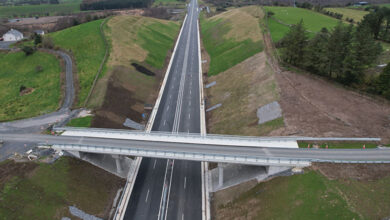Housing supply targets ‘understate need’

There is a high likelihood that the Government’s targets for housing supply “might understate need” given the stronger than expected increase in the population seen in the recent release of results from Census 2022, a report has found.
Published in January 2024, The National Development Plan in 2023: priorities and capacity report by Alan Barrett and John Curtis of the Economic and Social Research Institute (ESRI) finds that, although there are capacity constraints which limit the output available in the housing sector, that increased housing output “should dampen the price of existing houses and rents”.
The report adds: “Any increase in the costs of new building arising from increased investment could be offset by an easing in housing costs.”
In addition to population increases, the report outlines that there are other challenges which contribute to the need for increased supply. These include the relative strength of the economy compared to those of Ireland’s EU neighbours, meaning that there is a higher demand placed on the homeowner market as more homeowners “seek to buy their own home, or upgrade into better quality housing”.
In the report, however, it is unclear how many houses are required to be constructed per annum. The report was published with construction figures based on the Government’s commencement of new unit figures for 2022, which was 29,851. This figure has a broad consensus of being insufficient despite exceeding Housing for All targets. However, the commencement figures for 2023, published in the aftermath of the ESRI’s report, show a commencement figure of 32,801.
The ESRI informed the Government’s construction targets in Housing for All, and in a 2020 study called for an annual construction figure of between 30,000 and 35,000 homes per annum. The ESRI analyses that there are a number of factors which are likely to increase pressure on the housing markets, both in homeownership and in the private rented sector.
On high levels of inflation and subsequent increases in interest rates by the European Central Bank (ECB), the ESRI states that the increase in inflation has prompted monetary authorities globally to tighten monetary policy by increasing select policy rates.
“Departments will be engaging with my officials in the coming months to ensure that capital projects have funding allocated up to 2026.”
PENDR Minister Paschal Donohoe TD
“Increasing interest rates has an almost immediate impact on housing demand via an affordability channel,” the report explains.
A key policy target within Housing for All is construction of an average of 33,000 units per annum, reaching a maximum of 40,500 new units by 2030. However, the ESRI states: “It now appears likely with more up-to-date demographic data and given the increase in inward migration particularly associated with the war in the Ukraine, that this figure is too low and will likely be revised upwards.” Taoiseach Leo Varadkar expressed a belief that the upward revision of the targets “makes sense” in January 2023.
Other sectors
With the ESRI study examining Ireland’s infrastructure more broadly, it too makes note of Ireland’s energy, transport, healthcare, and education sectors.
On energy, citing targets in areas such as the Climate Action Plan, as well as the suite of energy policies currently in place, the ESRI states that there is a need for the State to transpose energy transition targets into levels of investment in terms of euros, but also in terms of labour inputs.
“Combining likely labour needs for onshore wind, offshore wind, solar PV, conventional generation, and energy efficiency, it is estimated that the annual additional employment requirement would be approximately 24,000,” the report states.
On the transport sector, the report, echoing a report by the OECD which found that Ireland’s transport system is “car dependent by design”, says that there is a need for “truly transformational policy with a focus on sustainable mobility at a system level”.
“In that context, even if the 2:1 expenditure ratio favouring public transport over new roads is maintained, the roads element of expenditure should be based on design which includes active travel modes,” the report asserts.
On health and education, the main challenge, according to the ESRI, is the higher-than-expected population growth which can put higher demand on resources in these sectors.
“The pace of population ageing presents particular issues for healthcare, especially with regard to long-term care. So, while the basic policy framework is in place and identifies the needs for investment in acute, primary and community care, the required scale and geographic distribution of the investment is likely to be evolving,” the report analyses on healthcare challenges.
On education, the report adds, in addition to population growth challenges, “many school principals rate school facilities poorly”. “Investment in digital infrastructure is also needed in education if stated policy ambitions are to be realised.”
Responding to the report, Minister for Public Expenditure, NDP Delivery and Reform, Paschal Donohoe TD was reluctant to commit to spending increases which would invariably be necessary if recommendations were to be implemented by the Government. He added: “Departments will be engaging with my officials in the coming months to ensure that capital projects have funding allocated up to 2026.”





